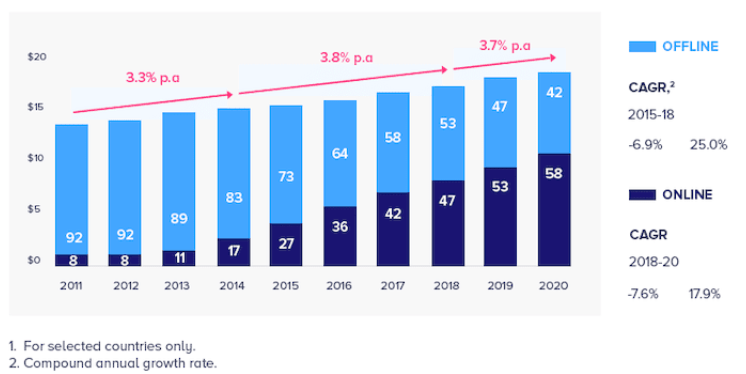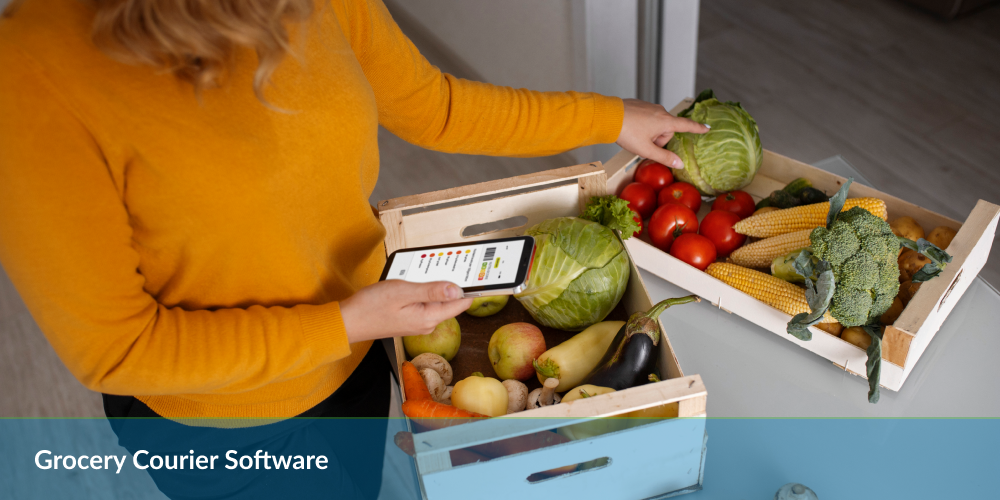Table of Contents
Home food delivery services have seen a monumental rise with consumers shifting away from dining-out trends after the Covid-19 pandemic.
As per the current market trends, the global online food ordering marketplace is expected to show an annual growth rate of 6.36% with a projected market volume of over $180 million by 2024.
Since online food ordering and delivery businesses are continually acquiring new customers each day, it has pushed many startups to enter the market with a higher thrust—making the marketplace highly competitive and challenging.
Let’s have a closer look at these challenges in food delivery business.
Challenges in Online Food Delivery Business
- Shifting Consumer Preferences
The ultimate objective of every food delivery service is to achieve sustainable growth by offering the best possible value to its customers at the least possible cost. With a plethora of choices available to consumers, the present-day food delivery market has become highly competitive with customers becoming spoilt for choice.
This has made the customer base unstable, resulting in poor brand loyalty. To control customer attrition, food delivery platforms have to use several marketing tactics and strategies to increase engagement.
- Unstable Market Prices
Volatile food prices also pose a big challenge to the pricing strategy for food delivery service. Since several factors affect the prices in the food industry, it is difficult for food delivery businesses to track and keep up with the prices to create the right pricing strategy.
Apart from inflation and increasing revenue deficits, food delivery services also need to focus on adopting aggressive or defensive pricing models to compete with their rivals. This puts a lot of pressure on profit margins and sustainable growth.
- Stringent Food Quality Standards
With the rising demand for online orders, maintaining the utmost quality while delivering food from the restaurant to the customer’s doorstep is a daunting task for food delivery partners.
For instance, certain items like ice cream and cold beverages require refrigeration or specialized containers to minimize heat loss. Similarly, some food items have to be placed under a certain temperature range to ensure the best quality and taste.
This makes it important for food delivery businesses to ensure that food packaging is cost-effective and functioning while aligning with customer expectations and providing them with a satisfying experience.
- Managing Customer Expectations
Regardless of the size of the market captured by a business, it is redundant if it fails to satisfy customer needs. Therefore, customer satisfaction is a collective responsibility of the food delivery platform and the restaurant.
Thus, the challenge here is to fill the gap that exists between the delivery partners and restaurant owners to work together and fulfill customer expectations proactively.
- Lack of Trained Delivery Agents
Food mishandling is one of the most common issues faced by a food delivery platform, often resulting in poor ratings and feedback provided by the customers. The primary reason here is the lack of training of delivery agents, which results in food handling and hygiene issues.
Successful delivery platforms provide proper training to delivery agents to handle special equipment and take orders via Kitchen Display Systems. Regular staff training sessions also play an important role in keeping your employees motivated and get a broader understanding of their roles.
- Threat Of Bigger Players
Established food delivery partners already have a bigger share and popularity among the masses, which makes it hard for other players to compete.
Plus, established brands have a higher revenue stream which they can use to build stronger marketing campaigns to increase their credibility among the customers. On the other hand, startups may not have the same revenue structure and may have to rely on word-of-mouth marketing and referrals for their success.
- The Logistics Challenge
Logistics can pose a big hurdle for startups in the food delivery business. Whether you want to deliver food items in a specific area or cater to wider geography, the scope of getting quick orders, allocating the right number of delivery agents, and ensuring optimum food quality remain some of the biggest challenges associated with logistics in the food delivery business.
Restaurants and their food delivery partners must address these challenges while continuing to focus on consistent development and growth.

How to Overcome the Challenges
Now that we know the challenges in food delivery business, it is important to think of viable solutions as well. For startups, a consistent focus on the bigger picture is required to succeed in a market with cutthroat competition. Here’s how you can ace this domain:
- Ensure efficient resource management to achieve lower operating costs and enhance functional efficiency to increase customer satisfaction.
- Devise customer-centric marketing strategies to increase customer retention and word-of-mouth referrals.
- Stay up-to-date with the market trends and keep up with customer enthusiasm through attractive food options and gamification strategies.
- Incorporate an efficient on-demand food delivery software to streamline your business operations such as gaining a bird-eye view of your orders, customers, and delivery agents through a single dashboard.
Selecting The Right Online Food Delivery Software
While selecting an online food delivery software for your business, it’s important to understand the type of online food delivery software you require as per your business model.
1. The Aggregator Model: This software model offers a multi-restaurant delivery capability to help customers order food from all or most of the outlets in their area. For instance, Uber Eats, Zomato, and Foodpanda.
2. The Specific Restaurant Model: This model applies when you want to build your food delivery solution, and unlike a multi-restaurant order system—you don’t need to share your profits with anyone.
While both the models cater to different business requirements, it makes sense for restaurants and startups in the delivery business to adopt an effective online food delivery software model.
Here’s how some of the top features of online delivery software can make a huge difference for your on-demand food delivery solution:
- Smart Route Optimization: With route optimization, you can increase the productivity of your delivery agents by creating the fastest delivery routes, which also enhances customer satisfaction.
- Multiple Payment Gateway Integration: With multiple payment options, you increase the convenience of your customers by giving them the freedom to use their preferred payment methods.
- Geofencing: Geofencing lets you create operational areas for your agents to minimize delays in order fulfillment.
- Auto Assignment of Orders: Efficient online food delivery platforms automatically assign deliveries to nearby agents that increase on-time deliveries and customer satisfaction levels.
- Performance Analytics: With performance analytics, you can monitor key business metrics to improve your operational efficiency and increase productivity.
- Real-Time Tracking: With real-time tracking, your customers and you can track their orders and get up-to-date ETAs.
The NetworkON Advantage
NetworkON puts your business in a turbo-charged mode by giving your online food business a 53% increase in productivity and a 22% rise in customer satisfaction. With a delighted customer base, you win loyal customers who not only re-purchase from your business but also spread a positive word of mouth.
To learn how you can use our online food delivery solution for your on-demand food delivery business, connect with our experts here or mail us at info@networkon.io
Frequently Asked Questions
What are the biggest challenges in the online food delivery business?
The online food delivery business faces several challenges, including shifting consumer preferences, unstable market prices, stringent food quality standards, managing customer expectations, lack of trained delivery agents, competition from larger players, and logistical difficulties. These challenges can impact customer satisfaction, profitability, and long-term sustainability.
How can startups overcome the challenges in the food delivery industry?
Startups can overcome these challenges by ensuring efficient resource management, devising customer-centric marketing strategies, staying up-to-date with market trends, and incorporating efficient on-demand food delivery software. Adopting smart technologies like route optimization, multiple payment gateways, geofencing, auto-assignment of orders, and real-time tracking can also help enhance operational efficiency and customer satisfaction.
What is the difference between the Aggregator and Specific Restaurant Model in online food delivery software?
The Aggregator Model offers a multi-restaurant delivery capability, allowing customers to order food from various outlets in their area. Examples include Uber Eats, Zomato, and Foodpanda. On the other hand, the Specific Restaurant Model is designed for individual restaurants or startups that want to build their delivery solution without sharing profits with other restaurants.
How can NetworkON help my online food delivery business?
NetworkON can significantly boost your online food delivery business by enhancing productivity and customer satisfaction. With features like smart route optimization, geofencing, real-time tracking, and performance analytics, NetworkON helps streamline operations, reduce delivery times, and improve customer experience, increasing loyalty and positive word-of-mouth.





Clark Calhoun
Hello! I just wanted to say how much I appreciated this blog post. Your writing is always so engaging and informative. It's clear that you have a deep understanding of the subject matter. Thank you for sharing your expertise with us. Looking forward to your next post!